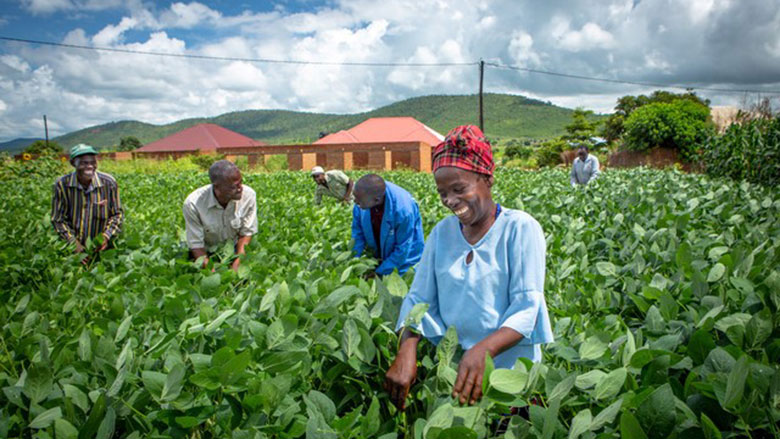LUSAKA, May 12, 2019 – As climate change and uncertainty increasingly threaten Zambia’s agricultural productivity, a new report provides evidence on climate-smart technologies that provide the greatest potential for sustainability, enhanced resilience and reduced greenhouse gas emissions.
The Zambia Climate-Smart Agriculture Investment Plan: Analyses to Support the Climate-Smart Development of Zambia’s Agriculture Section (CSAIP), developed collaboratively by the Government of Zambia and the World Bank, finds that the four most promising agriculture practices to achieve the ‘triple win’ of productivity increases, climate resilience and mitigation of greenhouse gas emissions are crop diversification, commercial horticulture, agroforestry and reducing post-harvest losses. The Zambia CSAIP is designed to inform the government, development partners and the private sector about promising climate-smart agriculture technologies and investment requirements to scale-up climate-smart agriculture (CSA.)
“Given the uncertainties of climate change and variability of weather conditions for growing crops, it’s vital that we analyze the impact of climate-smart technologies to guide decision-making,” said Ina Ruthenberg, World Bank Country Manager for Zambia. “At a time when both drought and flooding are occurring more frequently, we need to understand what constitutes ‘no-regret” actions. This report will help better integrate proven climate-smart agriculture practices into Zambia’s agriculture policy and investments.”
Findings from the report indicate that most climate-smart agriculture (CSA) technologies are expected to have positive welfare effects on households in the long-term. The practices are projected to support agriculture sector goals, such as increases in production, in net trade in key food crops and food availability and can have positive effects on climate mitigation in Zambia in the future until 2050, even as the climate changes.
However, the report also cautions that climate projections through 2050 show that crop yields could suffer under potentially increased temperature and shifting precipitation patterns. While most CSA practices under analysis were found to mitigate the negative crop yield shock, the risk remains that increases in crop production could stem from expanding agricultural land into forest land, rather than from increasing agricultural productivity on existing land. The increase in greenhouse gas emissions from land conversion could put Zambia at risk of failing to achieve its climate mitigation commitments.
Supporting and investing in business partnerships with rural communities, farmer field schools, and participatory integrated landscape management approaches seem promising, according to the report, and profitable mechanisms to support the uptake of CSA technologies and the development of a productive, resilient, and low-emission agriculture sector. These mechanisms can address the most pertinent constraining factors in Zambia’s enabling environment that hinder the adoption of CSA –access to capacity building and skills development, access to finance and access to markets.
“The CSAIP provides a ranking of promising CSA strategies which can be prioritized for scale-up, and the type and cost of investments needed to incentivize a broad adoption of CSA in Zambia,” said Mark Cackler, World Bank Agriculture Global Practice Manager. “This pragmatic approach will help zero-in on the technologies that show the greatest potential to be profitable for Zambian households, and help Zambia achieve its agriculture sector development goals in 2050 under various climate projections.”
About the CSAIP
The CSAIP represents a commitment by the World Bank’s Agriculture Global Practice under the Eighteenth Replenishment of the International Development Association (IDA18) to support development of 10 country-level CSA strategies and investment plans.
Along with Bangladesh, Zambia is one of two countries selected by the World Bank to pilot the development of a CSAIP, which builds on existing strategy documents aimed at boosting the agriculture sector. The CSAIP aims to inform the country’s Seventh National Development Plan and its National Agricultural Investment Plan, which is in the process of being updated.
The report was developed with support from a team of the International Institute for Applied Systems Analysis (IIASA), who developed a climate-impact assessment for Zambia’s agriculture sector, and a team from Food and Agriculture Organization (FAO), who conducted a thorough analysis of observed impacts of climate-smart agriculture (CSA) practices on households and financing needs to scale-up CSA at a sector level.
